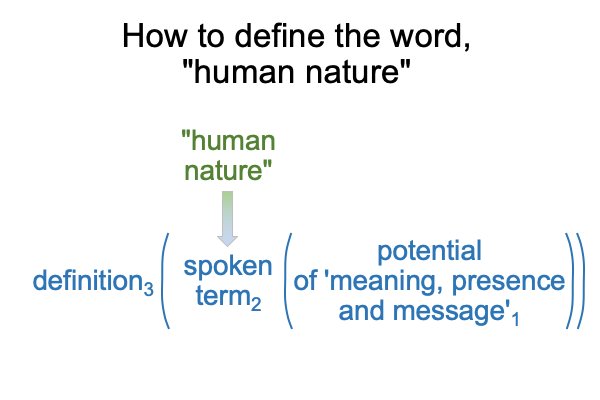0135 Chapter eight brings the reader to modern times.
What has the first singularity wrought?
Need a visual?
Newson presents a photograph (Figure 8.1) of a steampunk skull cyborg sculpture.
Here is an example of how speech-alone talk operates.
Unlike hand-speech talk, speech-alone talk permits explicit abstraction. In this sculpture, a resin-based human skull is explicitly extruded… oh, I meant to say… abstracted and converted into the foundation of what appears to be an audio-headphone machine. Body (skull) and mind (machine) fuse into a monstrosity.
0136 What are the authors not saying?
They do not say that this work of art initiates implicit abstraction. An innate relational structure for sensible constructiontells the viewer that social construction is needed. I know this from my visceral reaction to the photograph.
(See Razie Mah’s Comments on Religious Experience (1985) by Wayne Proudfoot, available at smashwords and other e-book venues.)
0137 Here is a picture of the failing sensible construction.

0138 This disturbing work of art characterizes modernity. Newson and Richerson tell a story in two interludes. Culture, originally defined as “shared information”, is now disorienting. The consequences? Throughout the world, fertility declines. Only local cultures, consciously avoiding modern urban cities, now have numerous children.
Surely, today, there are enough people.
The problem is that children are becoming more and more rare.
0139 Is this a problem of sign-processing? Does today’s “information” trade “something that adorns us” for children? Is there a foundational difficulty with speech-alone talk? What happens when words no longer picture or point to their referents, as they once did in hand-speech (and hand) talk? What happens when we construct artifacts in order to validate our spoken words? What happens when the artifacts fail to deliver?
These types of questions are raised in Razie Mah’s masterwork, An Archaeology of the Fall, available at smashwords and other e-book venues.
0140 All the words that we use today in public discourse seem to have two meanings: a traditional one and a new-fangled technical one.
Need an example?
Consider the new-fangled, yet technical terms, “phenotype” and “adaptation”, in the following figure.

Compare that to the simpler scientific use of the terms in points 34 through 38.

0142 The new-fangled terms cross categorical levels within a complete three-level interscope. The aesthetics of such conjunctions make this book very attractive.
The old-fashioned scientific terms cannot be reconciled. Adaptations associate to the discipline of natural history. Phenotypes associate to the discipline of genetics. Each biological discipline would seem to be independent except for one awkward fact. Both sciences deal with a single entity, which one may call an individual, a species or a genus.
0143 In the epilogue, the authors proclaim (more or less), “Let us abandon the idea of ‘human nature’.”
Why?
“Human nature” is just a spoken term. The traditional meaning loads the term with political messages and connotes the presence of immutability. The new-fangled meaning looks at the term in the same way that a traditionalist gazes upon a steampunk cyborg sculpture. Surely, there is something wrong with this term.
Here is how the category-based nested form, which may be an innate cognitive principle for humans, understands how to define the term, “human nature.

0144 Perhaps, abandoning the idea of “human nature” will free us from the notion that our gut feelings, our hearts, and our minds can help us mate and raise a family.
But, abandoning “human nature” would leave us open to cultural influences.
0145 Cultural influences?
Psychological researchers investigate how social interactions [stimulate] hormonal responses and how culture [informs] brains. Do these actualities sound vaguely familiar? The corporate sponsors of these psychological researchers want to learn how to make their products more addicting and more real that they otherwise would be.
Ah yes, cultural influences need brains to inform.
0146 Consider the three-level interscope that guides the authors. The beauty of their intuition is that a completed three-level interscope is inherently intellectually satisfying. Satisfaction gives a feeling of completeness and accomplishment. The reader says, “Yes, here is a story about us. Here is a new look at human evolution.” The reader cannot put spoken words to the feeling that the book provides. Here is the arc of human evolution and history, in content, in situation and in perspective.
0147 These comments add value to Newson and Richerson’s book by introducing an option that the authors do not know. Humans adapt to sign-processing. Yes, human evolution manifests culture-gene co-evolution. But, the human niche is the potential of triadic relations, such as signs, mediations, judgments and category-based nested forms.
Surely, this book is somewhat addicting. Surely, this production seems more real than it otherwise would be. Why? The authors offer a new look at human evolution. So what if the new look is in terms of style, rather than substance. The authors offer something that other books on human evolution do not.
They offer acts of imagination.
